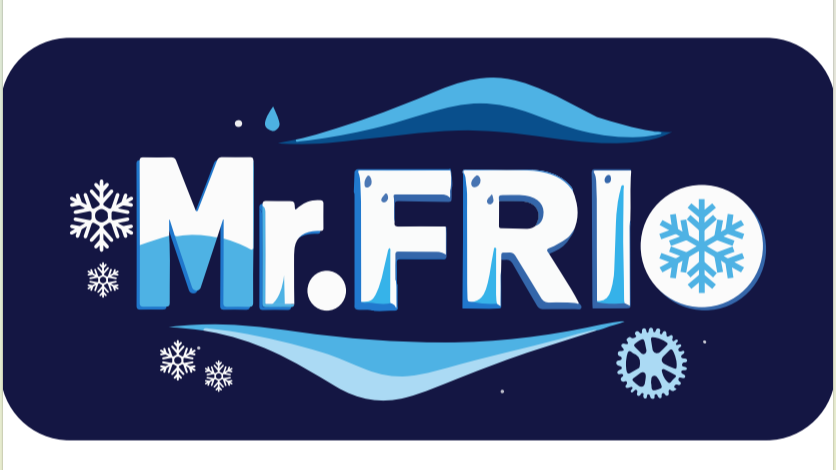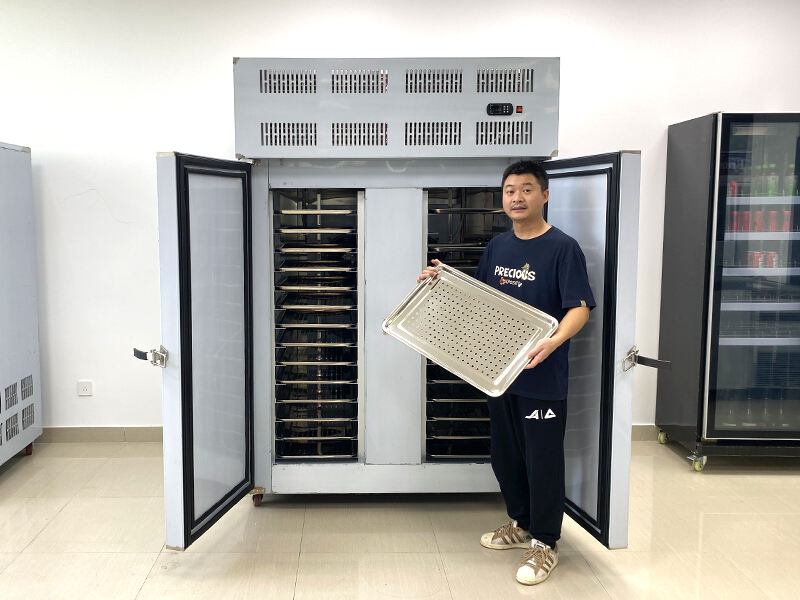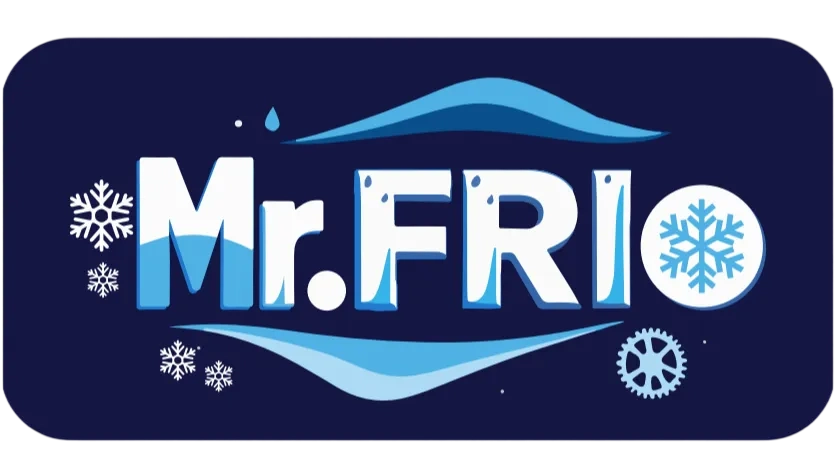الفروق الرئيسية بين التجميد السريع والطرق التقليدية
سرعة التجميد وتكوين بلورات الثلج
يعمل التجميد الفلاشي عن طريق تعريض الطعام لدرجات حرارة شديدة البرودة، عادة ما تكون حوالي ناقص 30 درجة مئوية أو أقل. عندما يتم تجميد الطعام بهذه السرعة، فإنه يشكل بلورات ثلجية صغيرة جدًا مقارنة بما يحدث باستخدام تقنيات التجميد التقليدية. يستغرق التجميد التقليدي وقتًا أطول، وبالتالي تنخفض درجة الحرارة بشكل أبطأ، مما يؤدي إلى تشكيل بلورات ثلجية أكبر تُحدث تلفًا حقيقيًا للخلايا داخل الطعام، مما يجعل النكهة أسوأ والمظهر أقل جاذبية. أظهرت الأبحاث أن هذه البلورات الثلجية الصغيرة الناتجة عن التجميد الفلاشي تحافظ على بنية الطعام دون تغيير، لذلك يظل الطعام متماسكًا بدلًا من أن يصبح مائيًا ومهترئًا عند إذابته، وهو أمر مهم جدًا خاصةً للأطعمة مثل قطع اللحم. بالنسبة لأي شخص يرغب في أن تظل وجباته المجمدة طيبة المذاق بعد التخزين، فإن التجميد الفلاشي يُحدث فرقًا كبيرًا مقارنة بالطرق الأقدم، لأنه يحافظ على مظهر الطعام طازجًا ويحسن من مذاقه بشكل عام.
الأثر على قوام الطعام واحتفاظه بالمغذيات
من حيث الحفاظ على نضارة الطعام بعد التجميد، يبرز التجميد السريع بشكل خاص لقدرته العالية على الحفاظ على الرطوبة والنكهة، بحيث يحتفظ الطعام بقوامه الجيد عند إذابته. أما التجميد العادي فيميل إلى تجفيف الطعام بشكل ملحوظ، مما قد يؤثر بشكل كبير على الملمس عند تناوله. أظهرت الدراسات مرارًا وتكرارًا أن الأطعمة المجمدة سريعًا تحتفظ بقيمتها الغذائية بشكل أفضل أيضًا. فعملية التجميد السريعة تقوم بعمل أفضل في الحفاظ على الفيتامينات والمعادن المهمة التي تُفقد غالبًا في طرق التجميد البطيئة. بالنسبة للأطعمة مثل التوت أو الروبيان، حيث يلعب الملمس دورًا كبيرًا، فإن هذا الفرق يكون جليًا. لا أحد يرغب بتوت مطاطي أو روبيان مطاطي الملمس بعد إذابته! يُعد التجميد السريع بمثابة وقف لفقدان القيمة الغذائية، مما يفسر سبب اعتماد العديد من المتاجر الفاخرة والمطاعم على هذه التقنية في تجهيز منتجاتها المجمدة هذه الأيام.
كفاءة الطاقة والتكلفة التشغيلية
في الواقع، يوفر التجميد السريع طاقة أكثر مقارنة بالطرق القديمة، لأنه يقلل من الوقت اللازم للتجميد ويستفيد بشكل أفضل من تقنيات التبريد. غالباًً ما تلاحظ المطاعم وشركات معالجة الأغذية انخفاضاً في تكاليف التشغيل بعد تحديث معدات التجميد لديهم، وذلك بشكل رئيسي بسبب انخفاض استهلاك الكهرباء. تشير بعض الدراسات إلى أن الانتقال إلى أنظمة التجميد السريع الحديثة يمكن أن يقلل فاتورة الكهرباء بنسبة تصل إلى 30% في بعض الحالات. والادخار المالي لا يفيد فقط الربحية، بل يقلل أيضاً من الانبعاثات الكربونية، مما يساعد الشركات على حماية البيئة أثناء توفير المال. هذا هو السبب في أن العديد من المشغلين الم forward thinking يتجهون اليوم نحو حلول التجميد السريع.
فوائد تقنية تجميد الفلاش الحديثة
تقليل فقدان السوائل وتحسين العمر الافتراضي
أصبح التجميد السريع ميزة كبيرة من حيث تقليل فقدان العصارات وتمديد فترة بقاء الطعام طازجًا. عندما يذوب اللحم، فإنه يطلق رطوبة نسميها فقدان العصارة، لكن التجميد السريع يقلل هذا بشكل كبير، مما يعني الحفاظ بشكل أفضل على جودة الطعام والوزن الفعلي على مر الزمن. التجميد التقليدي لا يصمد جيدًا أمام طرق التجميد السريع. الأطعمة التي تتجمد بسرعة تميل إلى البقاء صالحة لفترة أطول بكثير. تشير بعض البيانات الصناعية إلى أن مدة الصلاحية يمكن تمديدها بنسبة تقارب 60٪، على الرغم من أن النتائج قد تختلف حسب نوع الطعام المتجمد. بالنسبة للشركات العاملة في مجال الأغذية، فإن هذه التحسينات تتحول إلى فوائد حقيقية. كلما قل التلف، قلت الخسائر الناتجة عن هدر المنتجات، مما يجعل التجميد السريع خيارًا جذابًا لأي شخص جاد في الحفاظ على جودة الطعام بشكل متسق طوال مراحل التخزين والتوزيع.
المرونة عبر فئات الأغذية
التجميد الفلاشي يعمل بشكل رائع مع كل أنواع الأطعمة حقًا. فكّر في الأمر: يمكن الحفاظ على اللحوم، والخضروات، والفواكه، بل وحتى الأطباق الجاهزة بهذه الطريقة دون فقدان جودة كبيرة. المطاعم تحب هذه التقنية لأن إدارة المخزون تصبح أسهل بكثير عندما تتجمد جميع المواد بشكل جيد. كما أن تقليل الهدر يعني تحسنًا في الأرباح أيضًا. شركات الأغذية تكتشف طرقًا جديدة للعبث مع الوصفات نظرًا لأنها تعلم أن أي طعام يتم تجميده سيظل طعمه جيدًا لاحقًا. تعتمد علامات تجارية مثل Beyond Meat والشركات الأخرى العاملة في مجال المنتجات النباتية اعتمادًا كبيرًا على تقنية التجميد الفلاشي لضمان بقاء منتجاتها طازجة الطعم بغض النظر عن المكان الذي تُشحن إليه. كما انضمّت الشركات الكبرى في مجال الأحياء البحرية إلى هذه التقنية أيضًا، لضمان بقاء تلك السرطانات الفاخرة طرية بعد أسابيع من التخزين. التقنية منطقية تمامًا لأي شخص يسعى للحفاظ على الجودة أثناء الوصول إلى أسواق مختلفة.
معايير نظافة تجارية
تظل النظافة الصارمة ضرورية عند استخدام معدات التجميد السريع الحديثة، حيث تساعد في تقليل التلوث أثناء عملية التجميد. تحتوي العديد من المنشآت الآن على أنظمة آلية مدمجة في تقنيات التجميد الخاصة بها، مما يجعل عملية التنظيف بعد الإنتاج أسهل بكثير، وهو ما يحسن بشكل ملحوظ سلامة الأغذية بشكل عام. وتواصل الهيئات التنظيمية تذكير الجميع بأهمية ممارسات النظافة الجيدة في مصانع معالجة الأغذية في جميع أنحاء البلاد. ويتوافق التجميد السريع مع معظم هذه المتطلبات، ويتبع الممارسات القياسية في الصناعة، بحيث تصل المنتجات إلى السوق في حالة آمنة نسبيًا. أما بالنسبة للشركات، فإن الالتزام بهذه القواعد مع تلبية توقعات العملاء فيما يتعلق بسلامة الأغذية لم يعد فقط مسألة تجنب الغرامات، بل أصبح جزءًا من إدارة سمعة العلامة التجارية أيضًا.
التطبيقات الصناعية لأنظمة التجميد المتقدمة
حلول تخزين الثلج للمتاجر
تعتمد المتاجر البيعية بشكل كبير على تقنيات التجميد الحديثة لضمان بقاء مخزون الثلج طازجًا وجاهزًا للعملاء. ومع زيادة شراء الناس للكميات الأكبر من الثلج المعبأ مقارنة بالماضي، شهدنا ابتكارات رائعة في طريقة تخزين المتاجر للثلج ومعالجته. يبرز التجميد الفوري باعتباره أحد أفضل الطرق المتوفرة لإيصال منتج من أعلى جودة إلى الرفوف. تجد المتاجر التي تستثمر في هذه الأنظمة أنها تستطيع توفير المال على المدى الطويل أيضًا. إذ تصبح الصيانة أقل تكرارًا وتقل إلى حد كبير تلك الأعطال المفاجئة. بالنسبة لأصحاب المتاجر الراغبين في البقاء منافسين، فإن الترقية إلى أنظمة تجميد أفضل تعد منطقية من وجهة نظر تجارية، وكذلك عند التفكير في إبقاء العملاء المنتظمين راضين باستمرار من خلال منتجات ثلجية جيدة.
معالجة الغذاء بكميات كبيرة
تلعب التجميد الفلاشي دوراً كبيراً في معالجة الأغذية عند التعامل مع كميات كبيرة، لأنها تتجمد بسرعة كافية للحفاظ على متطلبات الإنتاج الضخم. تقلل هذه التقنية من وقت المعالجة، مما يسمح للشركات بإنجاز المزيد دون التأثير على سلامة الأغذية أو طعمها. تشير بعض التقارير الصناعية إلى أن إضافة التجميد الفلاشي إلى العمليات العادية قد تزيد الإنتاجية بنسبة تقارب 30%. بالنسبة لمصنعي الأغذية، يعني هذا النوع من التحسين تحقيق أرباح أفضل مع التأكد من أن العملاء يستلمون منتجات ذات جودة متسقة عبر مختلف الدفعات.
احتياجات تقديم الطعام للأحداث الخارجية
عند التخطيط للفعاليات الخارجية، فإن التكنولوجيا الجيدة للتجميد تُحدث فرقًا كبيرًا في الحفاظ على سلامة ونكهة الطعام حتى يبدأ الناس بتناوله. يقوم التجميد السريع بدقة بما هو مطلوب في هذه الحالة. إذ يمكن تجميد الأطعمة بسرعة بحيث تتحمل أسابيع من النقل أو التخزين دون أن تفسد، وبالتالي لا يواجه منسقو الحفلات مشكلة الساندويشات المبللة أو اللحوم الفاسدة عند الوصول إلى مكان الفعالية. إن المرونة التي يمنحها هذا الأمر لشركات تقديم الطعام هائلة. إذ يمكنهم التعامل مع التغييرات المفاجئة في الطقس أو التأخيرات غير المتوقعة أو طلبات العملاء المختلفة دون التأثير على الجودة. وفي حفلات الزفاف أو المهرجانات أو اللقاءات الرسمية، يحصل الضيوف على وجبات لذيذة تمامًا كما لو أنها أُعدت قبل تقديمها بدقائق، مما يُعزز بلا شك من مستوى الرضا العام لدى الحضور في أي فعالية.
معدات تجميد بالمستوى التجاري لحفظ مثالي
جهاز تبريد بلوك الثلج مع تقنية الجدار البارد والباب المائل
تتميز ثلاجات الثلج التجارية الآن بتقنية الجدران الباردة التي تحافظ على تحكم أفضل في درجة الحرارة طوال الوقت، مما يؤدي إلى إنتاج مكعبات ثلج بجودة أفضل بكثير. الطريقة التي تعمل بها هذه الثلاجات ذكية للغاية، حيث تحافظ على درجات حرارة ثابتة عبر الغرفة بالكامل من خلال تقييد كمية الهواء المتدفق بشكل مباشر، مما يقلل من استهلاك الطاقة بشكل ملحوظ. هذا الأمر منطقي بالنسبة للشركات التي تحاول تقليل التكاليف مع الاحتفاظ بنهج واعٍ للبيئة. بالإضافة إلى ذلك، عندما تكون درجة التبريد مستقرة، يمكن للعاملين الحصول على الثلج الطازج في أي وقت دون الحاجة إلى الانتظار حتى تكتمل دفعات جديدة. كما يشير معظم المشغلين إلى أن العملاء أصبحوا أكثر رضا أيضًا لأن الثلج لا يذوب بسرعة خلال فترات الذروة، وتصبح عملية العمل بشكل عام أكثر سلاسة يومًا بعد يوم.
خزان تخزين الثلج الخارجي المقاوم للأحوال الجوية
تحتفظ خزائن تخزين الثلج الخارجية ذات التصاميم المقاومة للعوامل الجوية بجودة الثلج وتجعله متاحًا للعملاء حتى في الظروف الصعبة. صُمّمت هذه الوحدات لتتحمل أي تحديات تطرحها الطبيعة، مما يطيل من عمرها الافتراضي ويقلل الحاجة إلى الإصلاحات أو الاستبدال المتكرر. وينتج عن ذلك وفورات حقيقية للشركات على مدى الأشهر والسنوات. وهي مثالية للمواقع التي تتطلب تخزين الثلج بعيدًا عن أشعة الشمس المباشرة، حيث تمنع الذوبان بشكل أفضل من الموديلات القياسية. والنتيجة؟ يحصل العملاء دائمًا على ثلج عالي الجودة دون القلق بشأن تحوله إلى ماء قبل استخدامه.
نظام توزيع أكياس الثلج بسعة كبيرة
تعمل ماكينات توزيع الثلج في الأكياس ذات السعة العالية على تسهيل الحياة بشكل كبير عندما يُحتاج إلى كميات كبيرة من الثلج، حيث تقلل من أوقات الانتظار للعملاء. تقوم الماكينات بأداء معظم العمل بدلاً من تحرك الموظفين لنقل الأكياس يدويًا، مما يقلل الفوضى ويبقي المكان أكثر نظافة بشكل عام. انظر إلى أي مطعم خلال أوقات الذروة أو الفعاليات التي تُقدّم فيها مئات المشروبات بسرعة – فإن هذه الموزعات تتميز حقًا في مثل هذه الحالات. كما تشير التقارير أيضًا إلى تحسن في أرقام المبيعات لأن العملاء يتم خدمتهم بسرعة ويغادرون راضين بدلاً من أن يكونوا مستاءين من الانتظار الطويل لمشروباتهم.
ثلاجة عرض ثنائية الأبواب لتخزين.bulk
تم تصميم ثلاجات العرض ذات الباب المزدوج لتوفير رؤية قصوى للمنتجات وسهولة الوصول إليها، وهي ميزة يحتاجها أصحاب المتاجر بشدة عند محاولة جذب انتباه المتسوقين. تسهم هذه الوحدات في تقليل تكاليف فواتير الكهرباء دون التأثير على كفاءة الحفظ، مما يعني أن البائعين يمكنهم خفض المصروفات دون التفريط في الجودة. لكن ما يميز هذه الثلاجات حقًا هو قدرتها على تمكين المتاجر من تنظيم بضائعها بطريقة لافتة للنظر. تساعد الأرفف المائلة ونظام الإضاءة على جعل المنتجات بارزة، مما يحول التسوق العابر إلى عمليات شراء فعلية في معظم الأوقات.
المستقبل الاتجاهات في تقنية حفظ الطعام
أنظمة تحكم ذكية بالدرجة المحسنة بتقنية الذكاء الاصطناعي
تقف صناعة الأغذية على حافة تغيير كبير بفضل تكنولوجيا الذكاء الاصطناعي المطبقة على أنظمة التحكم في درجة الحرارة من أجل حفظ الطعام. تعمل هذه الأنظمة الذكية على مراقبة بيئات التخزين باستمرار وإجراء التعديلات اللازمة، مما يساعد على إبقاء الطعام طازجًا وآمنًا لفترة أطول. وبالنسبة لطرق التجميد على وجه الخصوص، يمكن للذكاء الاصطناعي اكتشاف التقلبات المحتملة في درجات الحرارة قبل حدوثها واتخاذ الإجراءات التصحيحية تلقائيًا. وبحسب خبراء في المجال، فإن تطبيق هذه التحسينات المدعومة بالذكاء الاصطناعي قد يقلل هدر الطعام بنسبة تصل إلى 20 بالمئة، وهو ما يمثل تحسنًا ملحوظًا في كفاءة إدارة موارد الغذاء (وتشير تقارير الهندسة الغذائية إلى نتائج مشابهة). ومع اعتماد الشركات في قطاع الأغذية يومًا بعد يوم لمناهج أكثر تقدمًا من الناحية التقنية، لا شك أن الحلول المدعومة بالذكاء الاصطناعي ستصبح أدوات أساسية لضمان بقاء المنتجات المجمدة صالحة للاستعمال لفترة أطول بكثير من عمرها الافتراضي الحالي.
ممارسات التجميد المستدامة
بدأت صناعة الأغذية تأخذ مسألة الاستدامة على محمل الجد من ناحية ممارسات التجميد. يعتمد العديد من الشركات الآن على تقنيات جديدة تعمل بالطاقة الشمسية أو الرياح، مما يقلل من انبعاثات الغازات الدفيئة مقارنةً بطرق التجميد التقليدية. دفعت المجموعات الرقابية البيئية بقوة في الآونة الأخيرة، مشيرةً إلى أن هذه المبادرات الخضراء قد تتحول إلى متطلبات رسمية في جميع أنحاء القطاع قريباً. تساهم الشركات التي تتحول إلى هذه التقنيات النظيفة في حماية الكوكب وفي الوقت نفسه بتلبية متطلبات العملاء اليوم، حيث أصبح الناس يهتمون كثيراً بمصدر طعامهم وطريقة إنتاجه. في المستقبل، سنرى على الأرجح حلولاً أكثر إبداعاً تظهر مع سعي مصنعي الأغذية إلى الوفاء بهذهمعايير البيئية الجديدة دون تكلفة مالية باهظة.
تكامل العلامات التجارية القابل للتخصيص
توفر خيارات العلامة التجارية على وحدات التجميد والتبريد فرصة حقيقية للشركات لتمييز نفسها في الأسواق المزدحمة. عندما تضع الشركات شعاراتها وألوانها مباشرة على وحدات التخزين الباردة نفسها، يميل المتسوقون إلى تذكرها بشكل أفضل، خاصة في المتاجر الغذائية حيث تكون هذه العروض في المقدمة والمركز. تشير الأبحاث السوقية الحديثة إلى أن التجزئة التي اتبعت هذا النهج شهدت زيادة في عدد العملاء المتكررين بنسبة تصل إلى 15٪ بمرور الوقت. لا تقتصر العلامة التجارية على مجرد المظهر الجيد، بل إنها تخلق في الواقع اتصالاً بين المنتج والأشخاص الذين يشترونه. ومع ازدياد عدد العلامات التجارية التي تتنافس على الانتباه هذه الأيام، أصبحت وحدات التجميد ذات العلامة التجارية ضرورة تقريبًا بالنسبة للمتاجر الكبرى والمطاعم التي تسعى لبناء علاقات أقوى مع عملائها المعتادين. من المتوقع أن نرى مقاربات أكثر إبداعًا مع تصاعد المنافسة في قطاعي البيع بالتجزئة والمطاعم.


